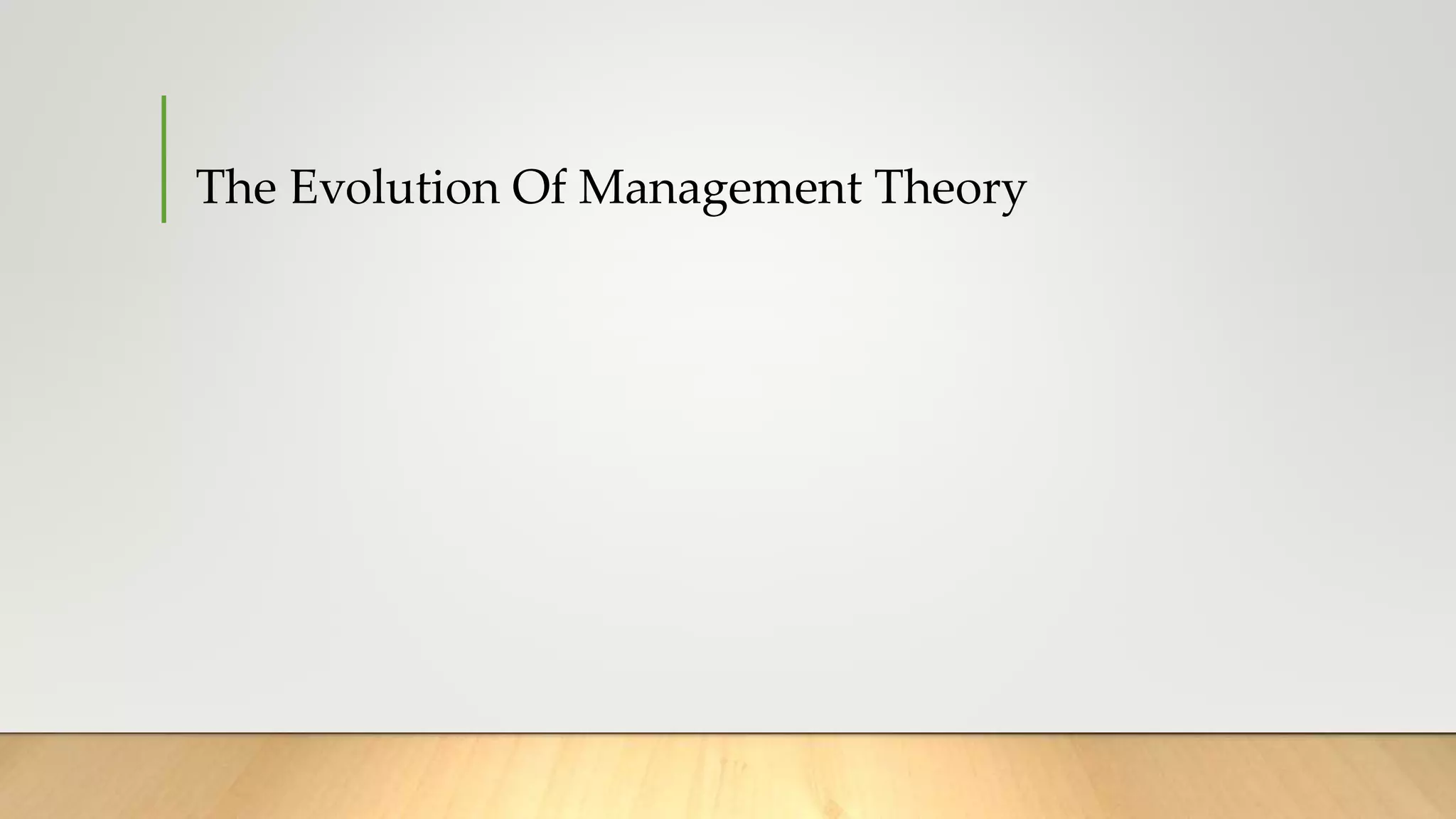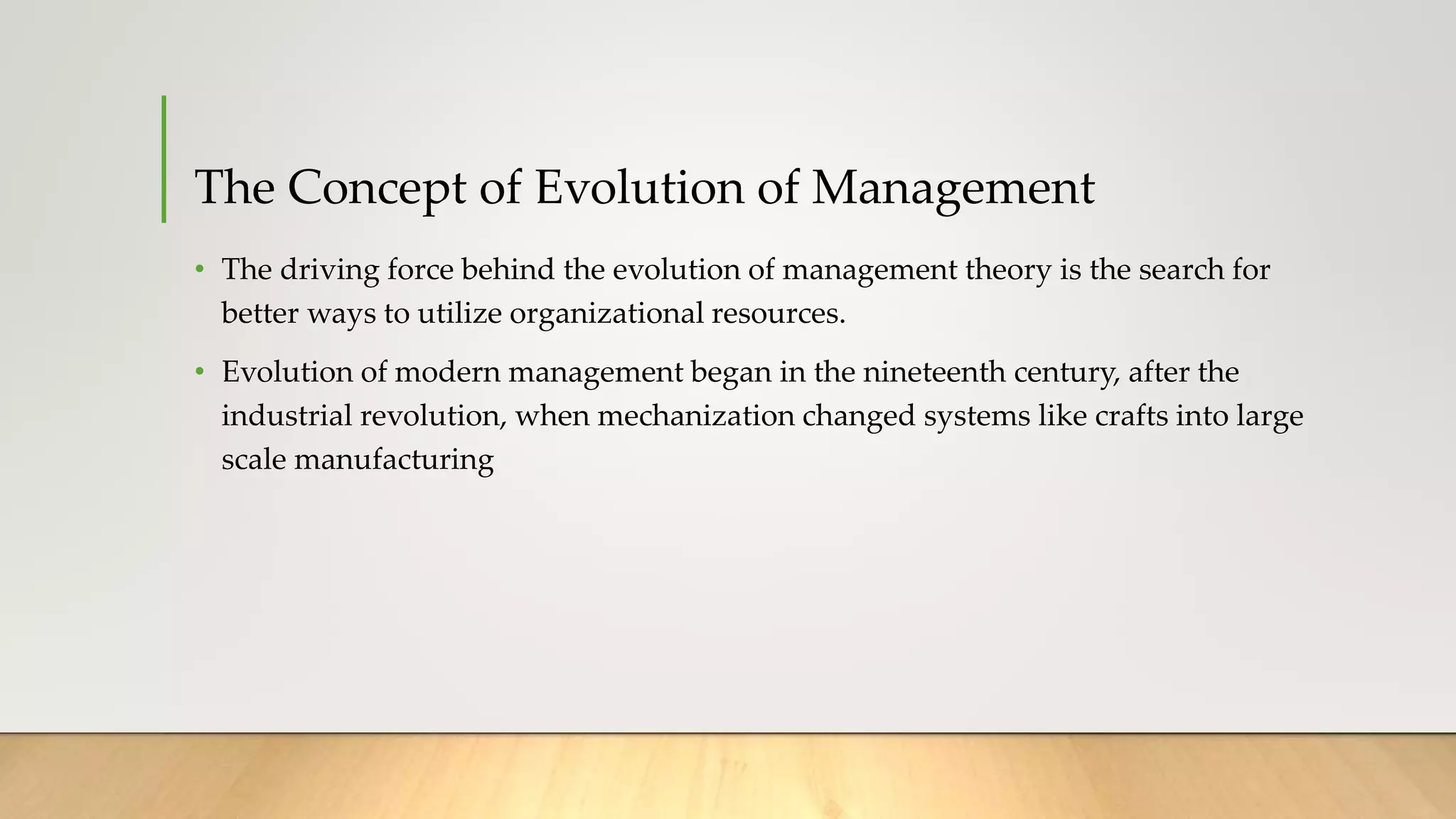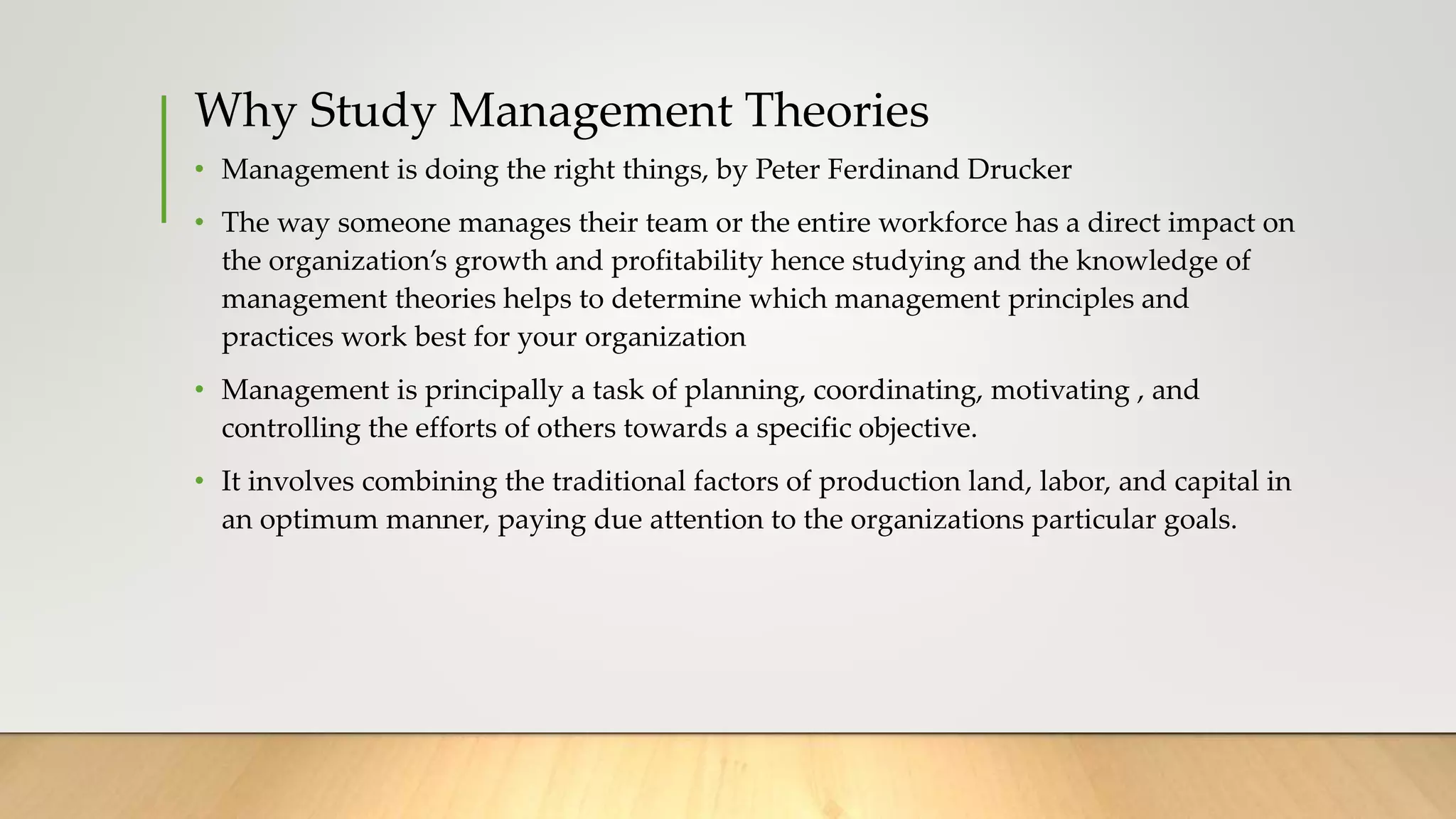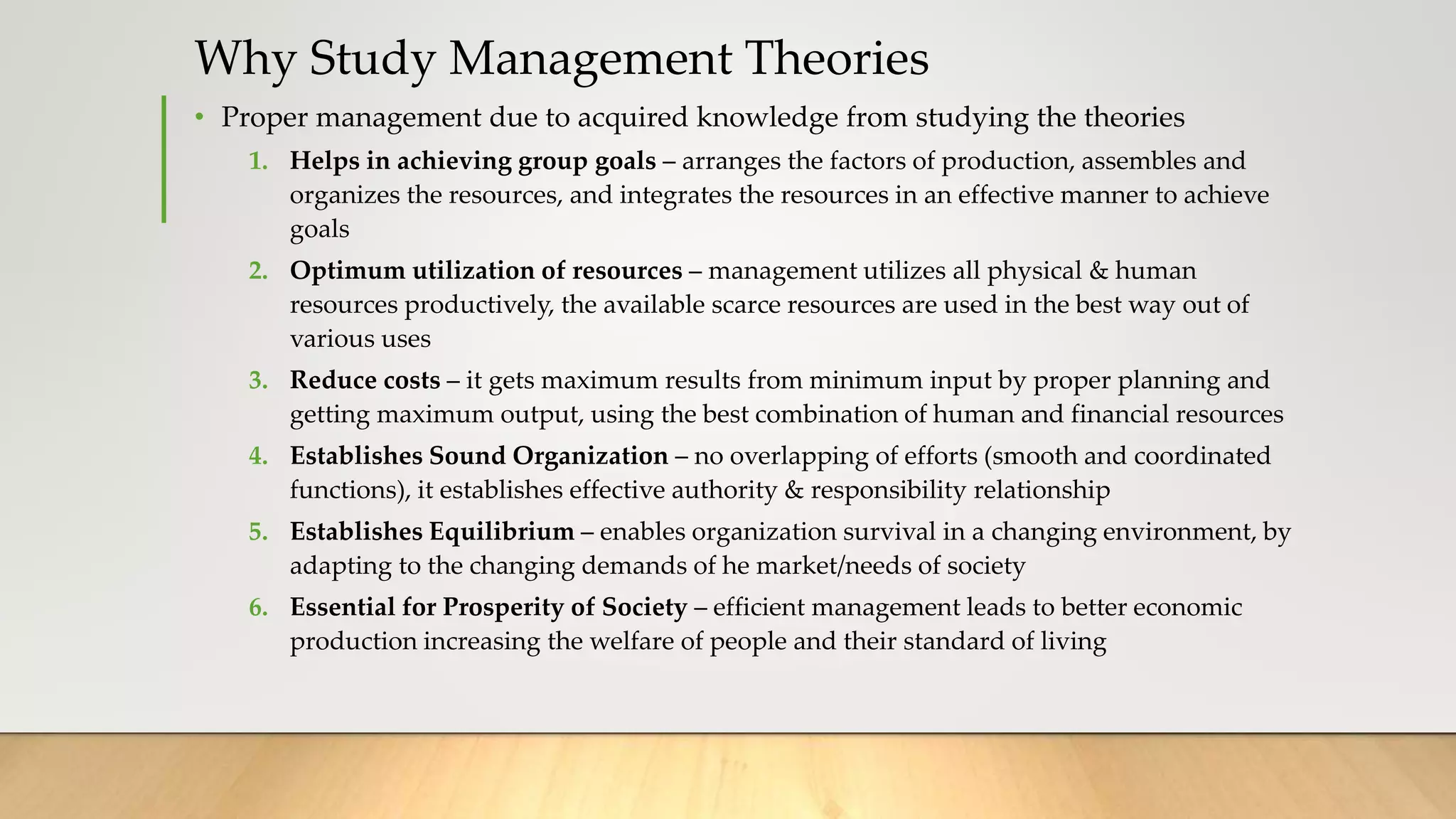Management theories have evolved over time from classical approaches focusing on structure and authority to more modern approaches considering people and external environments. Early theories included scientific management, bureaucratic management, and human relations approaches. Contemporary theories view organizations as open systems influenced by internal and external factors, with no single optimal approach but instead contingency-based solutions dependent on each organization's unique situation. The evolution of management theory continues as the business environment changes.




























